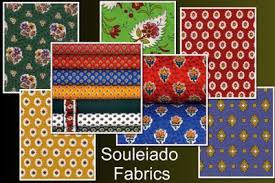In Provence, the typical family home has a style quite unique to this special region. This is because for two thousand years, local craftsmen have largely produced their own materials for furnishing and decorating local homes. In this blog, I will highlight design elements that help create this distinctive look.
FURNITURE
A very distinctive Provencal style emerged in the eighteenth century, largely as a result of the French naval base in Toulon. The ships' carpenters made rather meager wages, but were well skilled at making wooden furniture, prow figureheads, paneling and balustrades. To supplement their income, they began making furniture for the local aristocracy. They were commissioned by firms to make furniture to resemble that made by Parisian cabinetmakers.
Artisans from Arles, Aix-en-Provence, Nimes and Marseilles also began to produce elegant pieces. Typically, Provencal pieces were beautifully carved with favorite motifs, including baskets of flowers, laurel branches, musical instruments, and curved lines.
The woods used were primarily fine walnut, which is a darker red in Provence, as well as fruitwoods including cherry and pear. The pieces were of solid wood; veneering was rare. Wood furniture was polished to a high sheen.
 |
| Cherry Provencal Chest via Pinterest |
PAINTED FURNITURE
Painted pieces were also prevalent in the Provencal home. Armoires and chairs were often painted to match the painted wood paneling. Often, sets for entire rooms were made in the eighteenth
century.
Painted furniture was made of pale fruitwoods. It was often used in country homes where the family could not afford walnut. However, today, painted pieces are sought after, and make a nice addition to any room.

Painted Armoire ( via Pinterest)
The painted rush-bottomed settee was introduced in the eighteenth century. The settee is now the most typical furnishing in Provencal homes.

Painted French Settee, circa 1880
aubergineantiques.com
TILE FLOORING
Traditionally the flooring in Provencal homes was terracotta tile, in various hues of oranges, reds, and browns. The oldest tiles were square. However, the most widely used tile in the last several centuries were the hexagonal tomettes.

Tomettes
lascombesmateriauxanciens.com
Antique reclaimed tomettes can still be found through companies specializing in reclaimed materials. New ones also are available.
ANDUZE POTTERY
Colorful pottery from Anduze in the Gard region of Southern France is found in many homes and gardens in Provence. The first Anduze vases were produced in the sixteenth century. Originally created for the gardens of the French gentry, by the nineteenth century they were purchased and used by the families of wealthy local silk merchants. Orange trees were planted in the colorful vases, which were brought inside during the winter to protect them from frost.
Traditional Anduze vases are set on a short, strong base. The vase typically has emblem and wreath designs, and are glazed in vibrant yellow, green, red, terracotta, and blue colors. These vases are still being made, and are being imported to the United States.
 |
Green Anduze Vases--via Pinterest
|
|
|
SOLEIADO FABRICS
'Soleiado' is Provencal for 'sun shining through the clouds after rain'. These are the tiny-patterned, brightly colored fabrics that are found in homes and shops throughout the region.
In the late seventeenth century, fabrics used in Provence came from the Near East. Known as
indiennes, these fabrics were mostly cotton, with patterns from India and Persia. The fabrics were made into drapes, pillows, bed-hangings, and to upholster chairs in local homes.
Although popular, the fabrics were also costly, and protectionists were successful in banning their importation. In response, the resourceful craftsmen of Provence sought to create the prints themselves. Through the use of industrial espionage, the workers discovered how to make the dyes that created the vibrant colors. The Indian patterns evolved into a new, distinct style by the addition of flowers, herbs, tiny fruits, bees, and olive and grape branches.
Soleiado fabrics use similar patterns and colors that developed from the Indiennes. The prints remain small and are made in shades of ocher, red, yellow, olive green, and blue.
These fabrics can be purchased in stores throughout Provence as well as in the United States. There is even a Souleiado museum in Tarascon, France that have on display the old charts and woodcut pattern blocks that were originally used.

Soleiado Fabrics via Pinterest
Whether it is walnut or painted furniture, tile flooring, colorful pottery, or the distinctly patterned fabrics, one or more of these elements will help to give your home the Provencal style.






